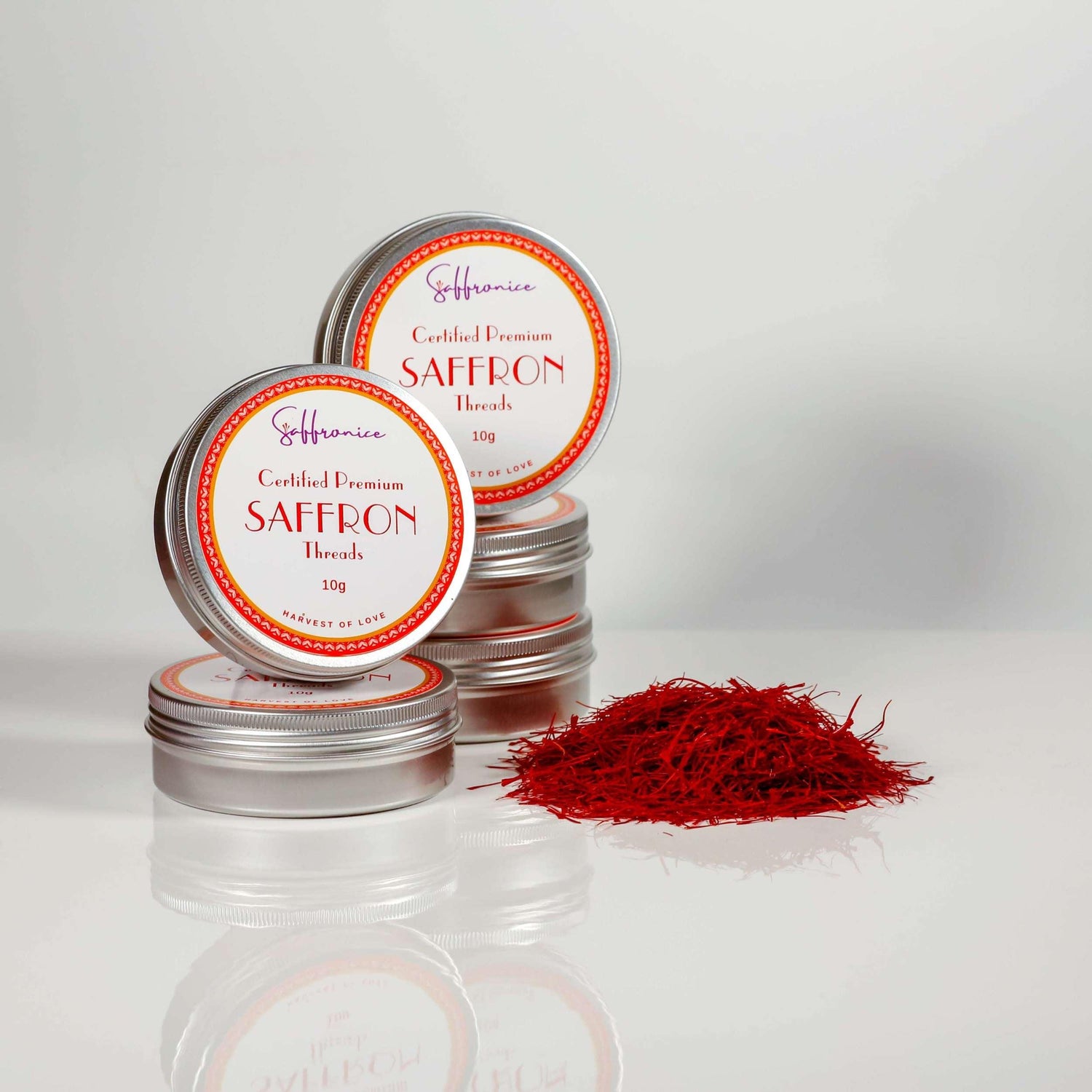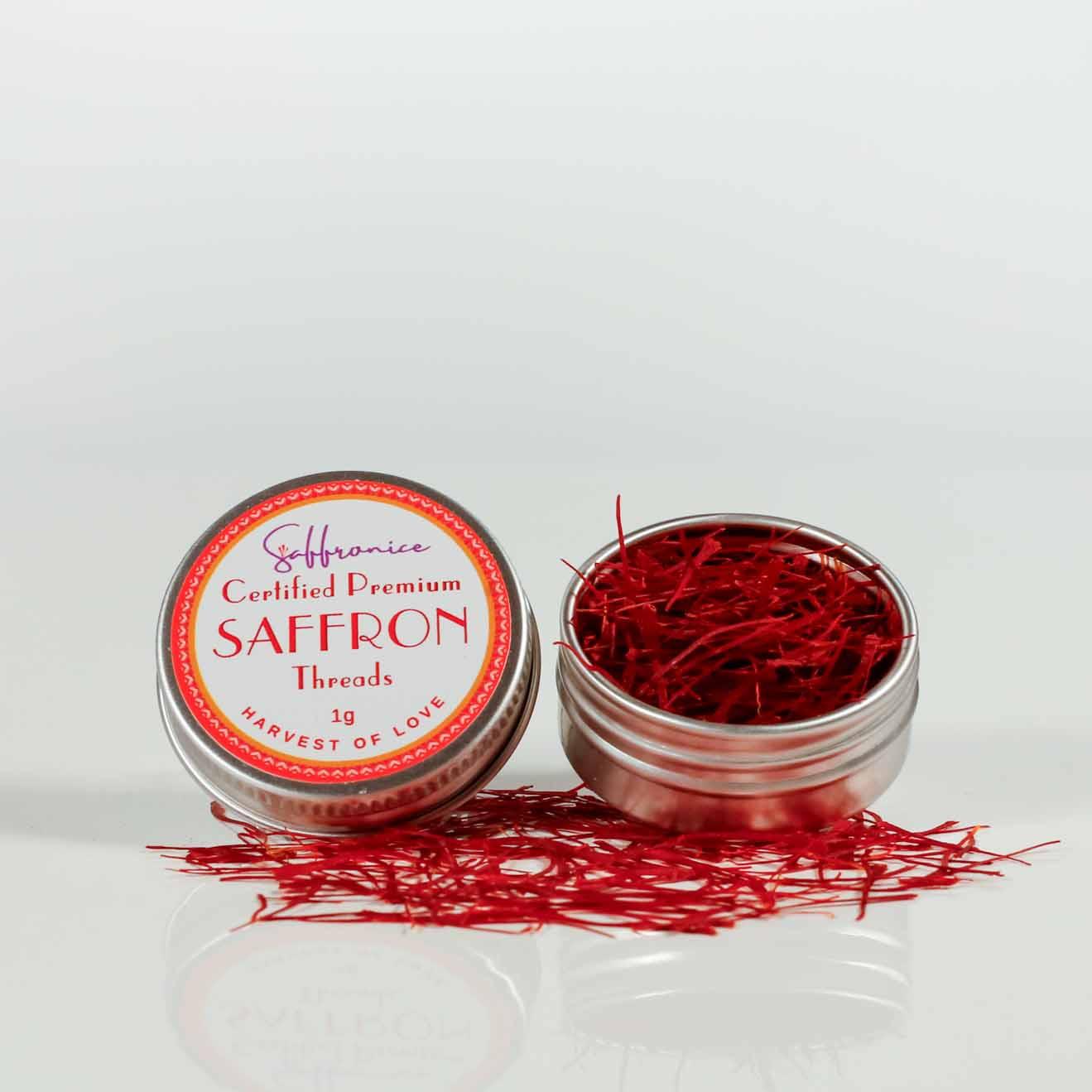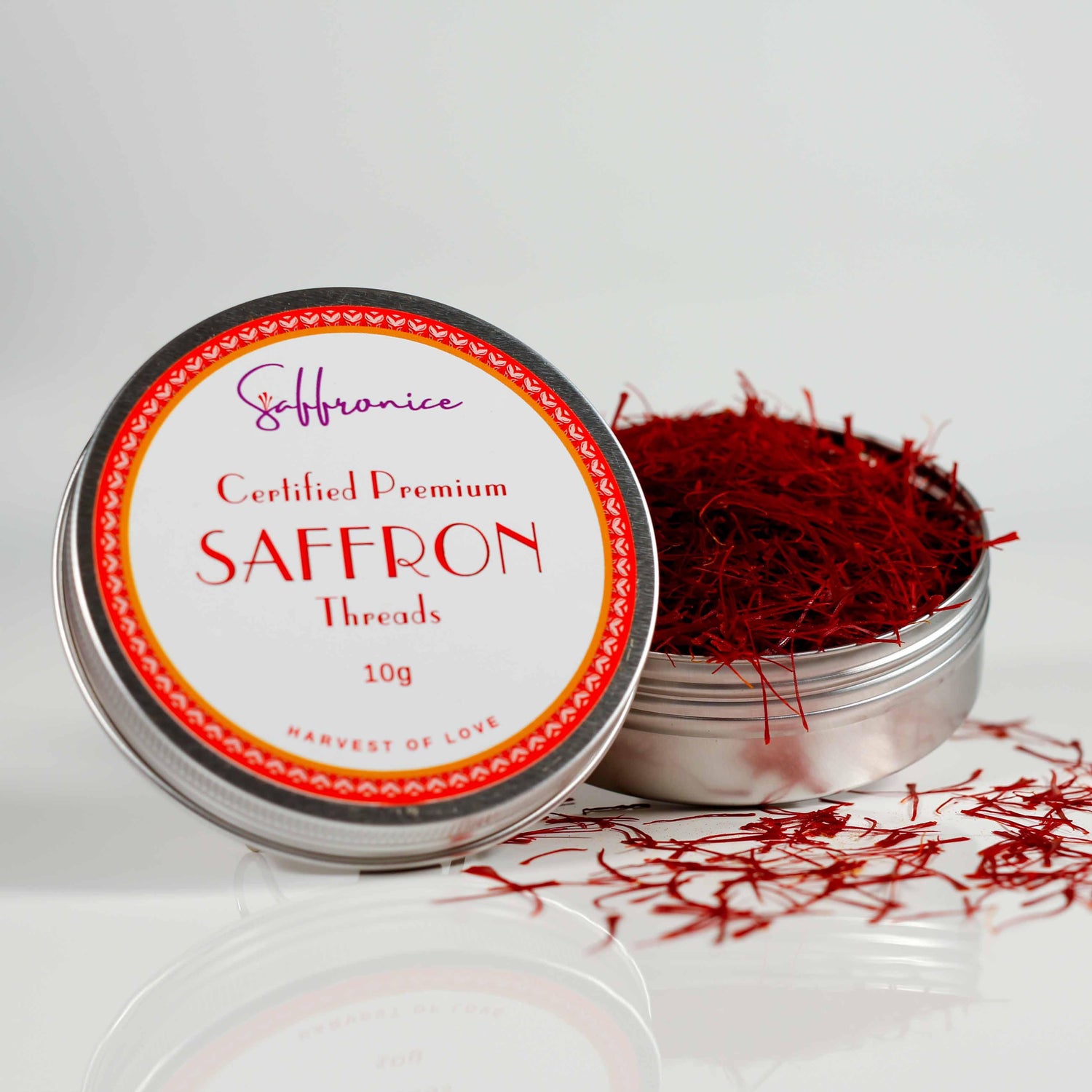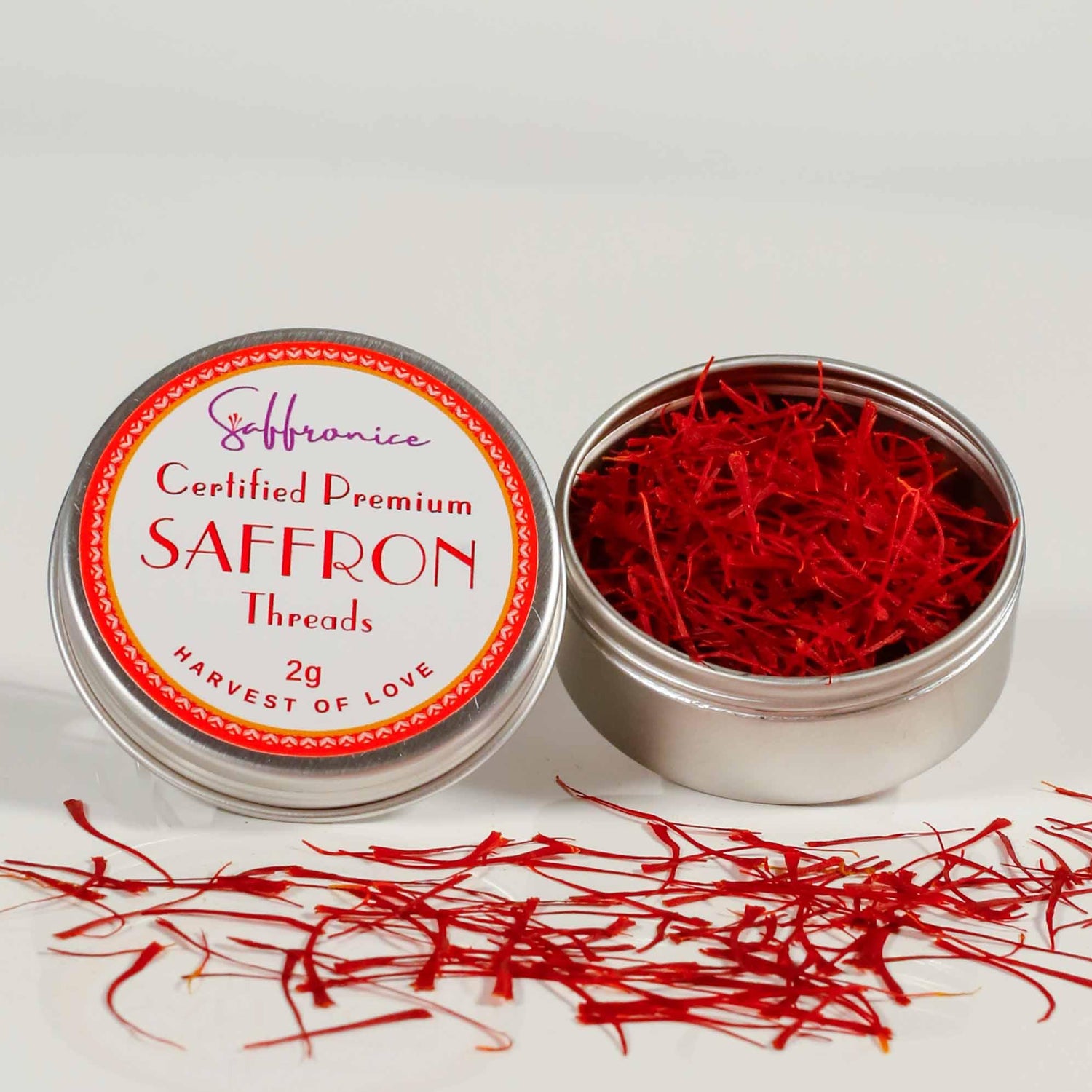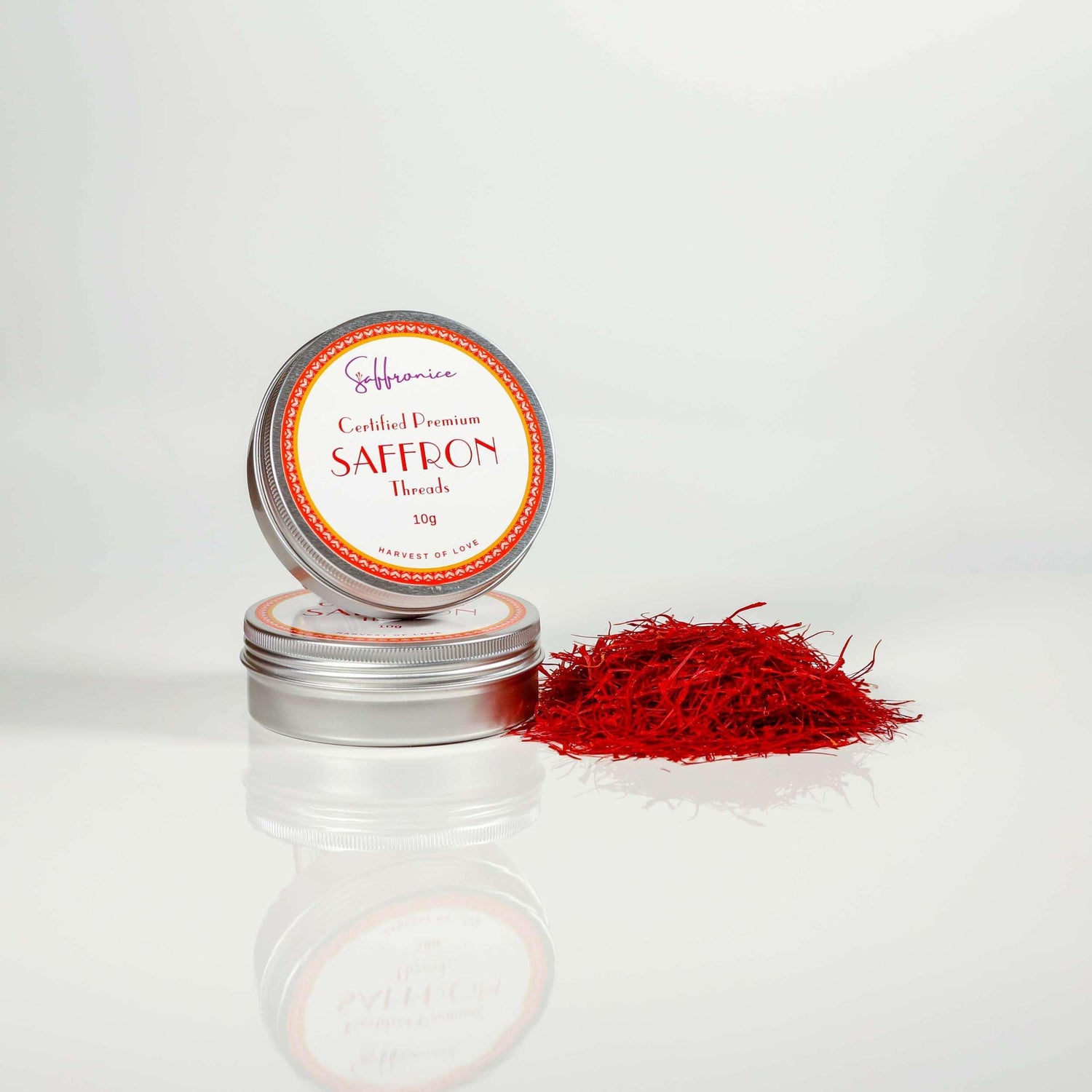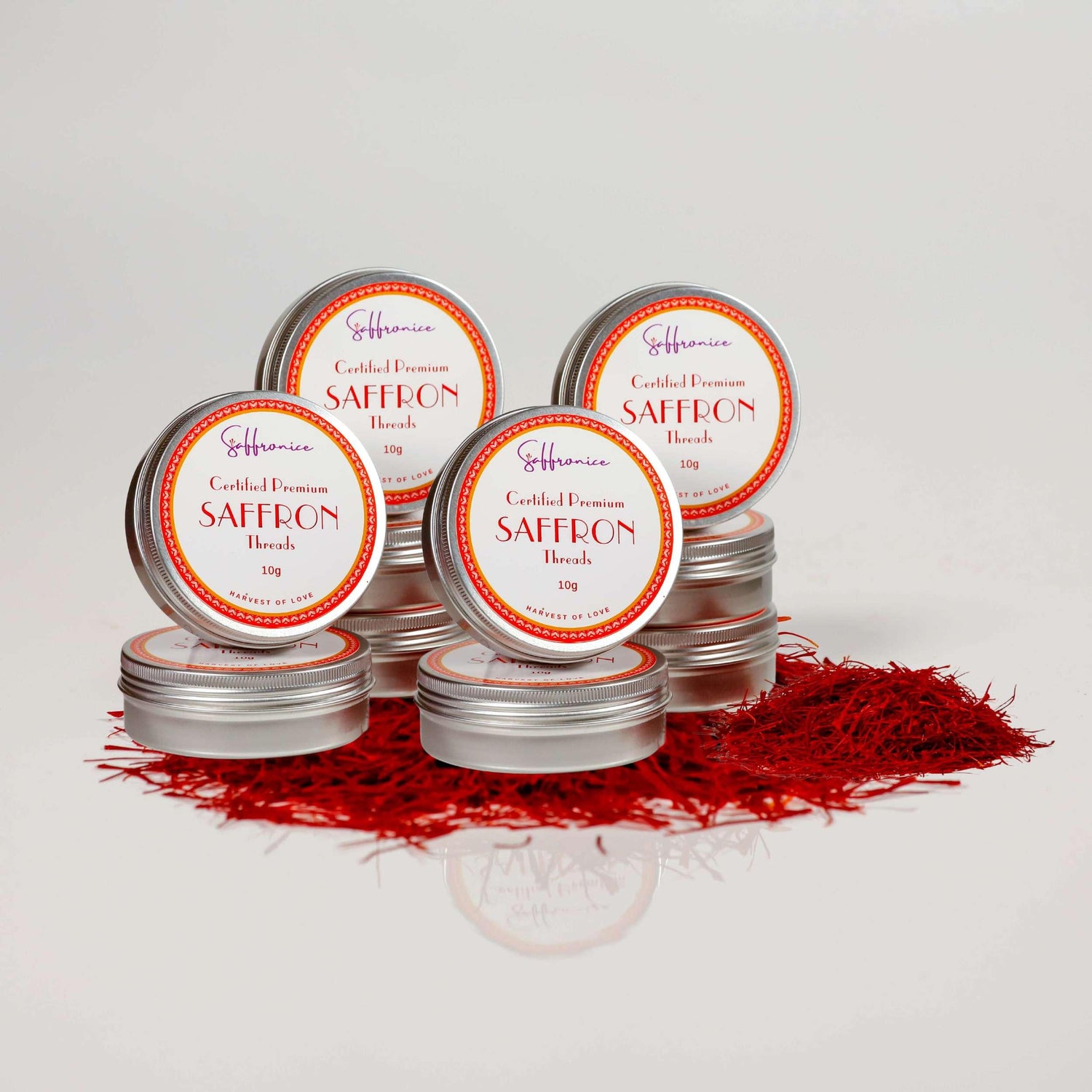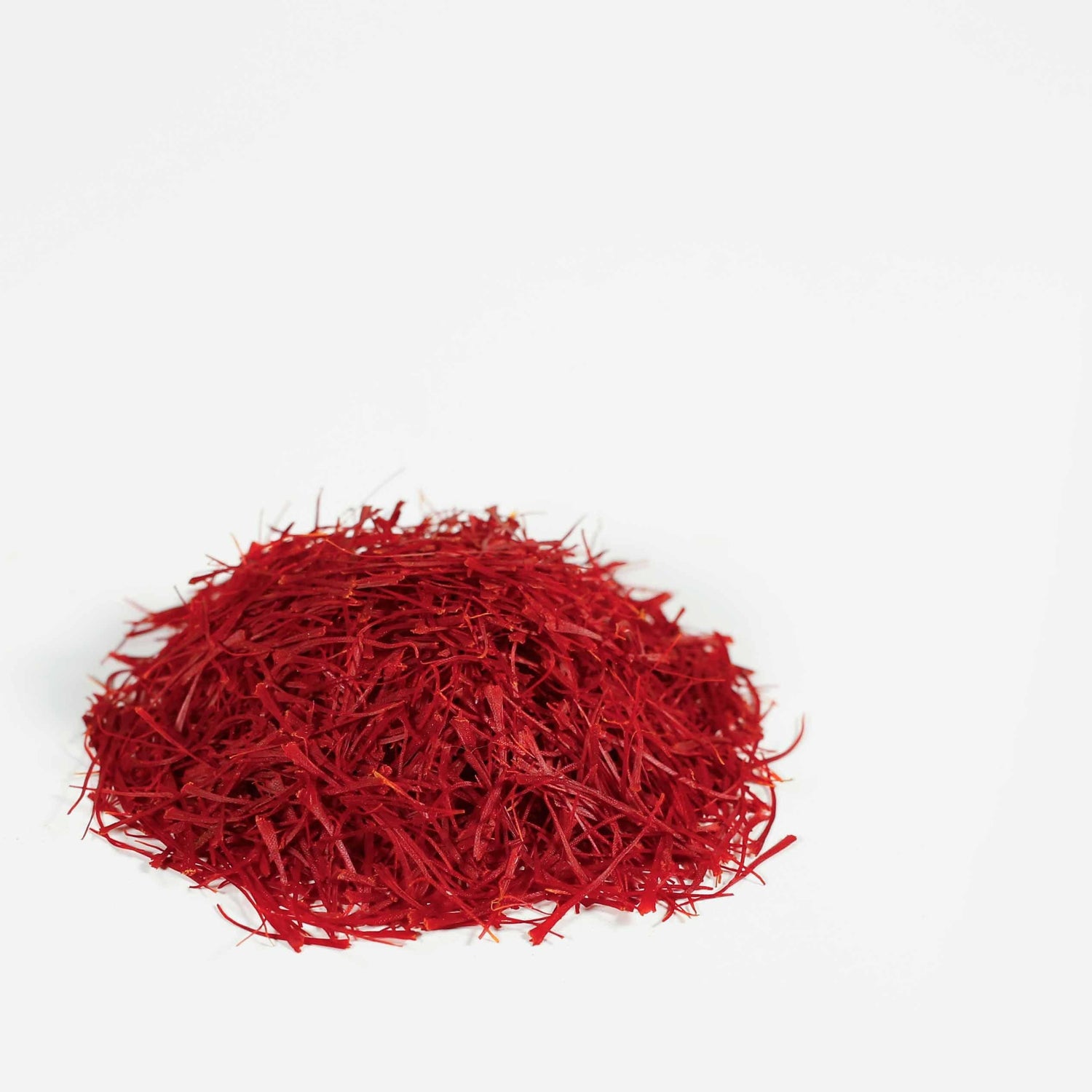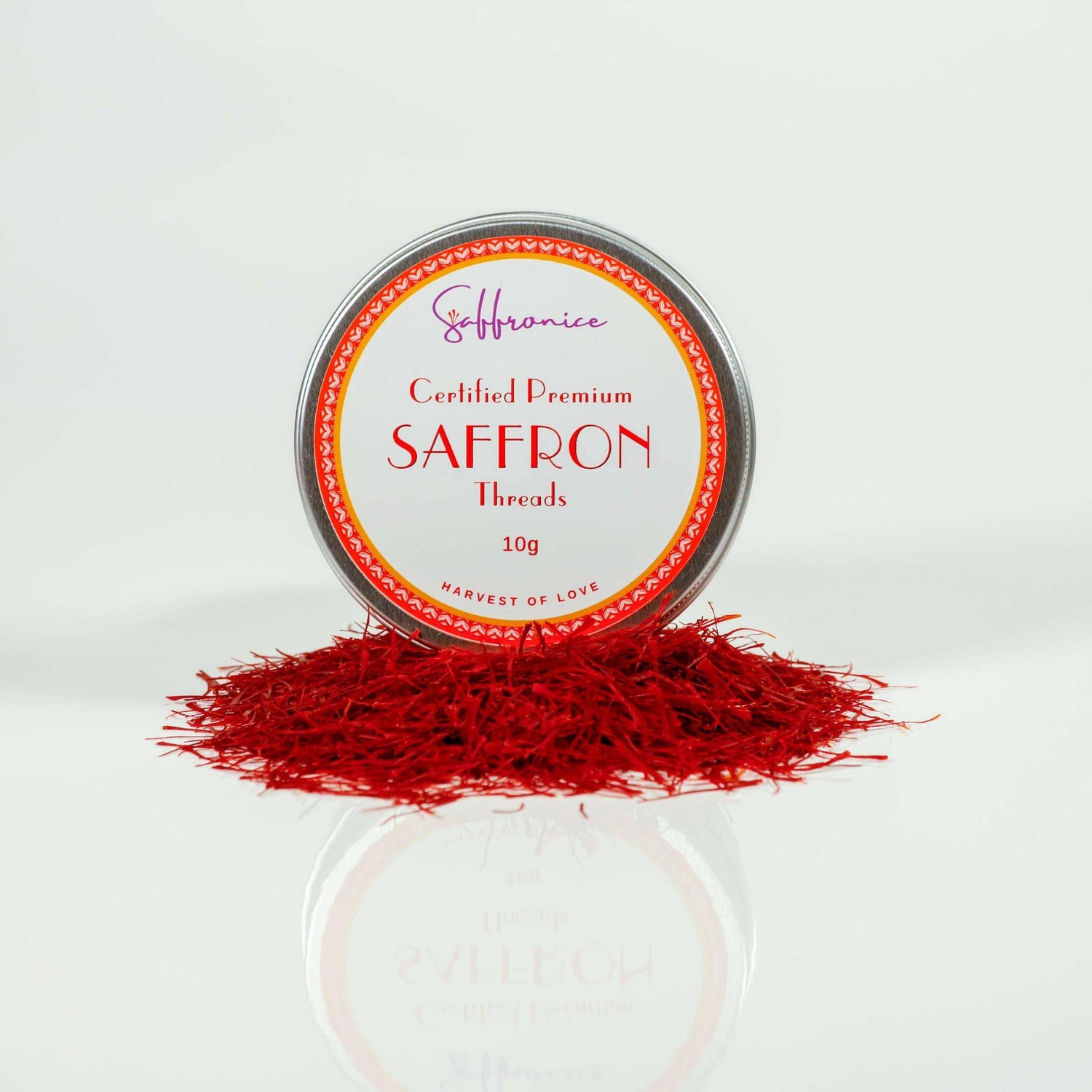Discovering the "10 Best Saffrons in the World" unveils a journey through time, culture, and the essence of culinary excellence. Saffron, the illustrious "Red Gold," carries a legacy over 3,000 years old, deeply woven into the fabric of numerous civilisations. This precious spice emerges from the delicate Crocus sativus flower, renowned for its unique flavour, mesmerising colour, and an array of health benefits, from uplifting moods to enhancing cardiovascular health.
The cultivation and harvesting of saffron are tales of labour and love, requiring the meticulous handpicking of thousands of flowers to yield just a pound of this coveted spice, making it the most expensive in the world. This painstaking process underscores the luxury and rarity of saffron, elevating its status among culinary and medicinal treasures globally.
As we explore the "10 Best Saffron in the World," we delve into what makes each variety exceptional. From the sun-drenched fields of Iran to the serene valleys of Kashmir, each strand of saffron brings its story, flavour, and vibrant hue to kitchens and medicine cabinets around the globe, marking its place as a true gift of nature.

Criteria for Ranking
When it comes to ranking the best saffron in the world, several key factors are taken into consideration:
Aroma
The aroma of saffron, known for its unique and powerful blend of sweet floral scents with earthy undertones, is crucial in determining the spice's quality. A more intense aroma often signifies a higher quality of saffron. The distinctive aroma of saffron is primarily due to volatile compounds, including safranal. Safranal is responsible for up to 70% of the fragrance of saffron. It is a product of the degradation of picrocrocin, which contributes to Saffron's bitter taste.
Colour Strength
The saffron should have a vibrant red colour, indicating minimal floral waste and a high grade of stigma. Colour strength, measured by a spectrophotometer, indicates the concentration of crocin, a compound responsible for Saffron's vibrant colour and a portion of its health benefits. Higher colour strength means a more potent spice.
Flavour
The flavour profile of saffron is as distinctive and refined as its fragrance. Notably, it imparts a subtly sweet and sophisticated essence that complements various culinary creations. The intricate and harmonious nature of Saffron's flavour is a hallmark of its high quality. While raw saffron threads may impart a sharp, almost bitter nuance, this complexity mellows upon cooking. In the alchemy of the kitchen, Saffron's bitterness is transformed, revealing a hint of sweetness, especially when paired with compatible ingredients that coax out its subtle, honeyed undertone.
Origin
The origin of saffron plays a critical role in its quality. Different regions produce saffron with distinct characteristics influenced by local climate, water quality and soil conditions. In some areas, saffron has been growing naturally for thousands of years.
Purity
Finally, purity is crucial. The absence of foreign matter and added colours ensures the Saffron's authenticity. Pure saffron contains no additives or other parts of the crocus flower. Only the red stigmas without any yellow threads indicate a higher grade of saffron.
Understanding these criteria helps consumers appreciate the value and effort behind every thread of saffron, ensuring they select the best for their culinary and medicinal needs.
Moisture Content
Lower moisture levels suggest a longer shelf-life and better preservation of flavour and aroma.
Solubility
Good solubility in cold water is desired for practical use in various dishes and beverages.
Microbiological Quality
The saffron must meet safety standards, with low microbial counts and no pathogens like E. coli.
Top Saffron Varieties in the world

Persian Saffron (Iran):
Iran produces more than 95% of the world's saffron, with its annual production nearing 550 tons. This saffron, cultivated in Iran for over 3,000 years, is highly sought after globally. Countries such as Spain and Morocco import Iranian saffron in large quantities only to repackage it for retail sale under the guise of Spanish or Moroccan saffron. Persian saffron, primarily harvested in the Great Khorasan region of Iran, is renowned worldwide for its exceptional quality. This area's unique climate conditions and ideal soil create the perfect environment for cultivating saffron that stands out for its vivid crimson threads, potent aroma, and rich flavour. Persian saffron is more than just a culinary ingredient; it's a cultural icon. It represents a rich history of agricultural mastery, economic significance, and culinary tradition in Iran. Its influence extends beyond borders, weaving into the fabric of global cuisine and healing practices.
Kashmir Saffron (India):
Kashmiri saffron, also known as "Kashmiri Mongra saffron," is one of India's most precious and sought-after varieties. Cultivated in the serene valleys of Kashmir, India, this saffron is renowned for its intense aroma, deep flavour, and vibrant crimson colour. The unique climatic conditions and the rich soil of Kashmir contribute to the distinctive qualities of Kashmiri saffron, making it a prized ingredient in culinary and medicinal applications. Organically grown in the Himalayan region, Kashmiri saffron is a testament to India's rich heritage of spice cultivation. It is harvested carefully, ensuring each thread retains its natural properties and unmatched taste. The lobar-intensive process of harvesting saffron, combined with its limited production, contributes to its high value, often fetching prices higher than precious metals.
Over the last ten years, the quality of Indian saffron has gradually diminished, primarily attributed to the extensive application of pesticides and other chemicals in agriculture. This has adversely impacted soil health across numerous regions in India. Laboratory analyses reveal a decline in the levels of crocin and safranal, critical indicators of saffron quality. Concurrently, labour costs have surged as a significant portion of the younger workforce shifts towards more lucrative employment opportunities in call centres and the IT industry.
Spanish Saffron (Spain):
Spanish Saffron, especially from the La Mancha region, is renowned for its traditional cultivation methods and a unique grading system that ensures high quality. The entire process of saffron production in La Mancha, including harvest, plucking, toasting, and packing, is done entirely by hand, preserving its quality and making it one of the most sought-after spices globally.
Since 2022, Spain has faced challenges in maintaining its previous levels of production due to adverse weather conditions and rising labour costs, resulting in a decrease in output to less than 500kg per year. Additionally, the Spanish saffron industry has encountered numerous instances of fraud.
In numerous instances, saffron imported from countries such as Iran is repackaged and sold under the guise of Spanish saffron. More egregious forms of fraud involve substituting saffron with materials like corn silk, safflower, and even dyed horse hair, deceiving consumers with these inauthentic products.

Greek Saffron (Krokos):
Greek Saffron, also known as Krokos, boasts a Protected Designation of Origin (PDO) status, highlighting its unique quality and geographical specificity. This saffron is celebrated for its hand-harvesting techniques, which maintain the integrity and potency of the spice, contributing to its high regard in both local and international markets.
The limited annual production of Greek saffron, approximately 3,000kg, coupled with high labour costs and the crop's susceptibility to weather conditions, contributes to Greek saffron's high market price and challenges in availability on the international stage. Saffron's status as the most expensive spice globally is exacerbated by these factors, underscoring the intricate balance between supply, demand, and the intricacies of agricultural production.
Afghan Saffron:
Afghanistan, traditionally known for opium cultivation, has seen a gradual shift among farmers towards saffron farming, especially after the US Invasion of the country. The transition was facilitated by the availability of saffron bulbs, often smuggled from Iran. Despite the potential, Afghan saffron farmers face significant challenges, including harsh winter conditions and water scarcity. These issues necessitate the removal of saffron bulbs during the off-season to protect them from freezing temperatures and pests, often requiring solid chemicals for pest control. Such practices impact the quality of Afghan saffron, resulting in lower ISO standards compared to Iran's superior saffron quality.
Additionally, due to sanctions imposed on Iran by the USA, some Iranian saffron exporters have shifted their operations to Afghanistan. By branding their saffron as Afghan, they can bypass sanctions and access global markets more freely. This situation underscores the complexities of saffron farming in Afghanistan, influenced by agricultural challenges and geopolitical dynamics.
Moroccan Saffron:
Moroccan saffron is noted for its rare availability and distinct characteristics, including its rich flavour and aroma. Its production could be more commercialised, making it a coveted ingredient among chefs and culinary enthusiasts seeking its unique qualities for particular dishes.
There are no official records of how much saffron is produced in Morocco. The country's saffron cultivation is predominantly concentrated in the Taliouine area, where over 90% of its saffron is farmed. This region and the Ourika Valley contribute significantly to Morocco's saffron production. The specific quantity of saffron produced annually is not detailed in the provided search results. Still, the focus on Taliouine underscores its importance to Morocco's saffron farming industry.

Italian Saffron (Abruzzo):
Italy produces 450 and 600 kg of saffron annually, cultivated over 50-55 hectares. The regions of Sardinia, Abruzzo, and others are involved in this production. This places Italy among the hobby saffron producers, alongside Spain, Greece, and Morocco.
Italian Saffron from Abruzzo is celebrated for its historical significance and extensive use in culinary applications. This region's saffron cultivation dates back centuries, and it continues to be a staple in Italian cuisine, particularly in dishes like Risotto Milanese, where it imparts a vibrant colour and subtle flavour.
Tasmanian Saffron:
Tasmania produces about 4kg of saffron threads a year, which accounts for nearly half of the total Australian saffron harvest of 10kg. This production comes from family-owned farms, such as the Noonans, cultivating saffron for over 30 years. Tasmanian saffron, known for its high quality, is harvested annually during April and May.
Tasmania's unique climate and environment contribute to its saffron's distinct characteristics, including variations in crocine and safranal levels. However, the rigorous cultivation practices on the island, such as organic farming methods and meticulous hand-harvesting, contribute to the premium quality of Tasmanian saffron. These practices ensure the production of high-quality saffron despite any perceived variations in chemical composition compared to other regions. The emphasis on organic farming and careful processing reflects a commitment to quality and sustainability, making Tasmanian saffron a sought-after product among chefs and gourmets worldwide. The high price reflects the labour-intensive process and the organic methods employed rather than an indication of inferior quality.
Azerbaijani Saffron:
Azerbaijani Saffron is known for its traditional use and export, with a rich history in saffron cultivation that dates back to ancient times. Azerbaijan produces saffron, which is appreciated for its colour, flavour, and aroma, contributing to its reputation as a significant player in the global saffron market.
In Azerbaijan, the production of saffron has seen an increase, with reports indicating an average yield of 3.8 kg per hectare. Specifically, 35 kg of saffron was produced in the West Azerbaijan province. This production contributes to Azerbaijan's potential in the saffron market, with the country having the capacity to earn significant revenue from saffron cultivation due to its high value.
French Saffron (Quercy):
French saffron, particularly from the Quercy region, has seen a revival in recent years, with a focus on maintaining high-quality standards. This revival is driven by local farmers' dedication to traditional cultivation methods, ensuring the production of saffron that rivals the best in the world for its flavour and potency.
The specific production figures for saffron in France must be detailed in the provided search results. Historically, France was once a significant producer of saffron, known as "red gold," and exported it in large quantities. However, production declined after the advent of mechanized farming and with competition from other countries. Before the French Revolution, France produced tonnes of saffron annually, but this production significantly decreased afterwards.
Today, saffron cultivation in France has revived in certain regions, such as the Lot and the Dordogne, where small-scale producers focus on quality over quantity. Despite this resurgence, France's saffron production remains modest compared to the global leaders in saffron cultivation.

Seven Essential Tips for Buying Saffron:
Saffron, often called the "red gold," is as luxurious as it is elusive, making its purchase an art form. This guide offers scientific insights and practical advice to help you navigate the vibrant yet complex world of saffron buying. Let's embark on a spice odyssey infused with a pinch of humour and a dash of scepticism.
The Color Test
A visual feast, the deep red hue of saffron is its first sign of authenticity. Genuine saffron threads are vivid crimson, with slight orange tips indicating naturalness. Be wary of uniformly coloured strands or those too bright; these could be dyed imitations.
Aroma Test
Saffron's aroma is unmistakably rich and complex, a heady blend of sweet, floral, and earthy notes. A genuine saffron aroma is potent and lingers; if it's faint or nonexistent, question the spice's authenticity. This test separates the real deal from the lacklustre pretenders.
Money-Back Guarantee
Trustworthy vendors often offer a no-questions-asked money-back guarantee, a testament to their confidence in the product's quality. This policy provides peace of mind, allowing you to explore Saffron's culinary magic without financial risk.
Ask for a Recent Lab Test
A recent lab test can reveal much about Saffron's quality, verifying its authenticity and potency. These tests analyze the spice's crocin (colour), picrocrocin (taste), and safranal (aroma) levels, providing a scientific basis for its grading.
Lab Test Benchmarks
In lab tests, look for numbers that exceed the International Organization for Standardization (ISO) 3632 requirements for colour, aroma, and taste. Higher numbers indicate a superior quality saffron, rich in the compounds that give it its coveted characteristics.
Beyond the Price Tag
While it's tempting to hunt for bargains, quality saffron comes with a price reflective of its labour-intensive harvesting process. Cheaper options might be too good to be true, potentially indicating adulteration or lower quality. Investing in higher-priced saffron often means a better culinary experience.
Grading Knowledge
Saffron grading varies by country, with each system assessing the spice's quality based on colour intensity, thread length, and purity. Familiarize yourself with these grades, as your culinary or medicinal needs may not require the highest (and most expensive) grade available. This knowledge allows for a more informed and tailored purchase.
A Spice Worth its Weight in Gold
Navigating the saffron market requires a blend of sensory acuity, scientific inquiry, and a dash of scepticism. Armed with these seven tips, you can select saffron that enhances your dishes with its incomparable flavour, aroma, and colour. Remember, the quest for the perfect saffron is not just about the spice itself but the journey of discovery, culture, and culinary excellence it represents.
Embrace the adventure, and let the golden threads of saffron weave their magic into your cooking and beyond.

Uses of Saffron
Saffron, often referred to as the "Red Gold," holds a revered spot both in the kitchens of seasoned chefs and the labs of medical researchers. As someone who has journeyed from the culinary world into medicine, I've witnessed the trans-formative power of saffron. Let's dive into the multifaceted uses of this exquisite spice.
Culinary Applications Across Different Cuisines
The Essence of Flavour and Color
In culinary arts, saffron is unparalleled. Its subtle yet distinctive flavour and vibrant colour enhance dishes, making it a staple in various cuisines worldwide. From the aromatic biryanis of India and the rich paellas of Spain to the delicate risottos of Italy, saffron is a thread that weaves through global culinary traditions.
A Pinch of Heritage
Each strand of saffron embodies centuries of agricultural traditions and culinary heritage. In my days behind the kitchen counter, I learned that using saffron isn't just about adding spice; it's about infusing history into every dish.
Medicinal Benefits and Research Findings
Antioxidant Powerhouse
Transitioning into the medical field, I was fascinated to discover Saffron's health benefits. Packed with antioxidants such as Crocin, Crocetin, Safranal, and Kaempferol, saffron plays a crucial role in combating oxidative stress and protecting against cellular damage.
Mental Health Ally
Recent studies have shed light on Saffron's potential in treating depressive symptoms and improving mood. Its compounds interact with the serotonin pathway in the brain, akin to conventional antidepressants, but with fewer side effects. This research opens new avenues for natural, holistic approaches to mental health care.
The Future of Saffron in Medicine
As we delve deeper into Saffron's pharmacological properties, its promise extends to cancer research, anti-inflammatory applications, and neuroprotective effects. The bridge between culinary expertise and medical knowledge reveals saffron as not just a spice but a beacon of health and wellness.
In conclusion, Saffron's journey from ancient fields to modern plates and pills encapsulates a versatility, health, and flavour legacy. As a chef and a doctor, I've come to appreciate saffron not just for the depth it adds to dishes but for its potential to enhance our well-being. In the kitchen or the clinic, saffron remains a testament to the enduring connection between food and health.

10 FAQs about Saffron
-
What makes saffron so expensive?
-
Saffron is known as the "Red Gold" due to its labour-intensive harvesting process. Each saffron strand must be handpicked from the Crocus sativus flower, requiring thousands of flowers to produce a single pound.
-
Which country produces the best saffron in the world?
-
Thanks to its ideal climate and soil conditions, Iran is renowned for producing some of the world's highest-quality saffron, accounting for over 95% of global production.
-
What are the critical criteria for ranking the best saffron?
-
The best saffron is evaluated based on aroma, colour strength, flavour, origin, purity, moisture content, solubility, and microbiological quality.
-
Can saffron be used for medicinal purposes?
-
Yes, saffron has been used for its medicinal properties, including mood enhancement and anti-inflammatory effects.
-
How can I identify high-quality saffron?
-
High-quality saffron has a vibrant red colour, a distinctive sweet floral aroma, and a subtly sweet and complex flavour profile.
-
Is there a difference in saffron quality between countries?
-
Different regions produce saffron with unique characteristics influenced by local climate, water quality, and soil conditions, making some countries' saffron more sought after.
-
How should saffron be stored?
-
Saffron should be stored in an airtight container in a cool, dark place to preserve its flavour and aroma for extended periods.
-
Why is Kashmiri saffron considered unique?
-
Kashmiri saffron, or "Kashmiri Mongra saffron," is prized for its intense aroma, deep flavour, and vibrant colour, attributes that stem from the unique climatic conditions and rich soil of the Kashmir Valley.
-
Can I grow saffron at home?
-
You can grow saffron at home if you have the right climate conditions. It requires a lot of sun and well-drained soil; remember, it takes many flowers to produce a small amount of saffron.
-
What dishes can I prepare using saffron?
-
Saffron is versatile and can be used in various dishes, including Spanish paella, Italian risotto, Indian biryanis, and Middle Eastern desserts, enhancing them with their unique flavour and colour.
Read other interesting blogs about Value and Heritage of Saffron.






